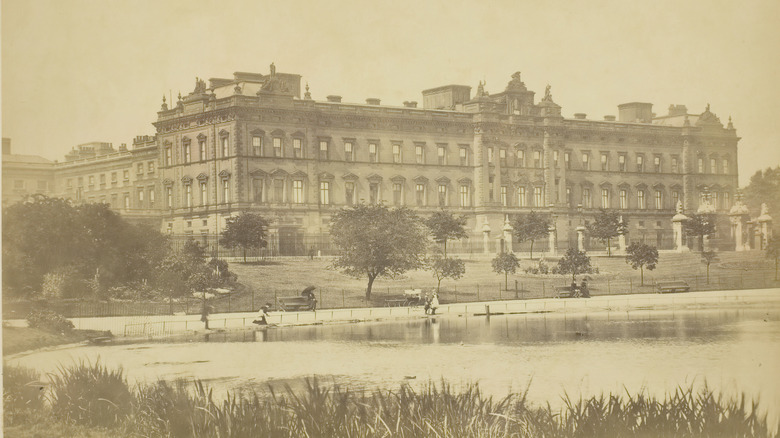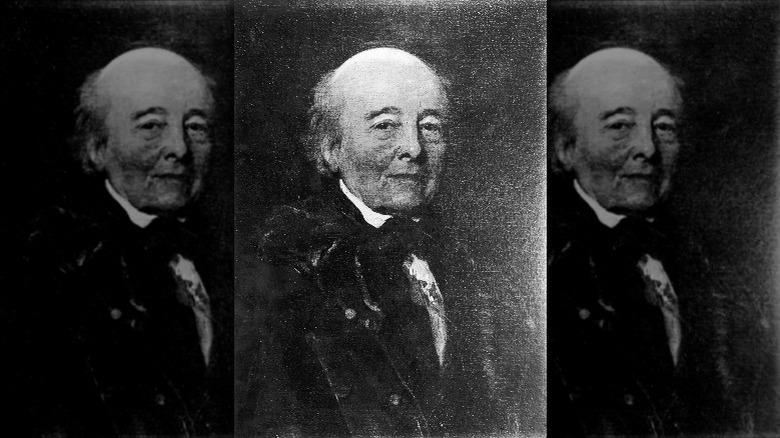Why Buckingham Palace's Legendary Renovator Was Fired
It is perhaps true that no one in history — except maybe the celebrated architect and polymath Sir Christopher Wren (via English Heritage) — has had a big a hand in shaping how London looks today as John Nash. As noted by Britannica, Nash — who was born in London in 1752 — is famous for developing what was Marylebone Park into Regent's Park in 1811, adding waterways, a lake, and botanical gardens along with other features to create an idyllic paradise for London aristocrats to socialize and relax.
Nash was also the architect responsible for Regent Street, today best known as a shopping street; while none of Nash's original buildings survive, the layout he created — he even designed the sewer system — was instrumental in establishing the area as a hotspot between Piccadilly Circus and Oxford Circus (via Sky History).
Nash was also famously the brains behind the beautiful ceremonial Marble Arch, but in fact the Arch was part of a wider project: the redevelopment of what in the 1820s was called Buckingham House into Buckingham Palace, the immense home of the British monarchy.
On the face of it, Nash may have seemed ideally suited to inherit such a project, but many historians now look upon the redevelopment as a disaster. Here is why.
John Nash's indulgent patron
As described by the Royal Collection Trust, in 1820 John Nash was given the responsibility of redeveloping Buckingham Palace by King George IV, whose father, George III, had been Nash's patron in the development of Regent's Park and Regent Street.
George IV had grown up in Buckingham House, which his father had bought specially from Sir Charles Sheffield in 1861 as a home for his wife, Queen Charlotte, and their family (via History), and the new King dreamt of making the building into a luxurious complex that could become the official residence of the crown. The job was to take a house and turn it into a palace that was quite literally fit for a king.
Ever a visionary, Nash's imagination and ambition for the new palace knew no bounds: He expanded the building tremendously, adding new west wings, a triumphal arch, and forming a central court, and his developments are generally considered some of the most important in the site's long history (via History). But behind the scenes, not everything was going according to plan.
John Nash's ignoble end
Disaster struck John Nash's Buckingham Palace renovations in 1830 when King George IV, who had been in poor health for most of his reign after ascending the throne at the age of 60, died (via History). With his passing, the British Parliament began to scrutinize the spending that Nash's project had incurred, and realized that the architect had massively overblown his budget.
Nash was removed from the project, and the architect left London in disgrace and in financial ruin — without his plans for the palace being completed — and retired to his home on the Isle of Wight, where he died in 1835 at the age of 83.
According to Sky History, only the West Wing of Nash's original designs survive, despite the huge cost and many years of work that Nash and his craftsmen put into the famous building. Nevertheless, his impact on one of Europe's most visited attractions remains the stuff of legend.


